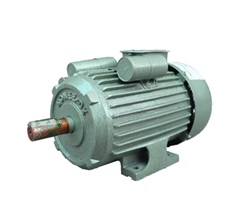Capacitor
INTRODUCTION TO CAPACITOR
Piggy-Bank:
You are going to a stationery to buy a pen. It costs about $300\;Rs$, but you have only $10\;Rs$ in your hand. That’s your favourite pen. What will you do???
You will start to save your pocket money in a piggy bank for few days. Right???
Piggy bank is like a temporary storage. It’s not your source of income, but it can be used as a temporary storage whenever more money is needed.
Piggy-Bank in Electrical Engineering:
In Electrical Engineering, sometimes we need more energy that cannot be provided at that instant by the power supply.
For example,
- Flash in a camera needs more energy, but it cannot be provided by the battery at an instant.
- To start a motor, we need more energy than the power supply can provide at an instant.

This is like the piggy bank problem.
“Do I have $300\;Rs$ at this instant? NO… But If I save my pocket money in the piggy bank for a while, I can have $300\;Rs$ to buy the pen.”
From Leyden Jar to modern capacitors:
Leyden Jar – a water filled glass jar: In $1745$, Ewald Georg von Kleist and Pieter van Musschenbroek independently invented the Leyden Jar, a water filled glass jar that can store and deliver large amount of electrostatic charge.
Leyden Jar with metal foil: Initially, it was thought that water in the Leyden jar is holding the charges.
Later scientists conducted series of experiments and replaced water with metal foil and achieved the same result. They also found that they could get the same effect by using a plate of glass with metal foil on both sides.
Air condensers: Then, Air condensers were made by replacing glass with air as dielectric.
Dielectric capacitors: Later, more compact capacitors were made using metal foil and dielectric sheets like mica, oilpaper, etc.
Vacuum capacitors: Later developments in the field of electrostatics reveals that dielectric is not essential, we can even make vacuum capacitors (i.e.,) just two metal plates separated by a small distance.
Construction of a Capacitor:
Observing from Leyden jar to modern capacitors, we can conclude that, to construct a capacitor we need two metal plates separated by a small distance. This separation may or may not be filled with dielectric materials.
What is a Capacitor:
Capacitor is a
- basic electrical component that stores electrical energy in the form of electric charge.
- component consists of two metal plates separated by a small distance. This separation may or may not be filled with dielectric material.
References:
Wikipedia – https://en.wikipedia.org/wiki/Leyden_jar
Contact Us
- admin@homeofece.in